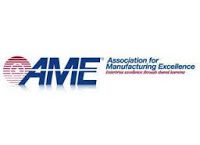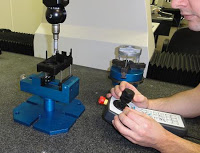
 Manufacturing in North America is going through a renaissance over the last few years, driven by rising labor costs overseas, the desire to simplify the supply chain, and the availability of cost effective automated solutions. These factors have also contributed to drive a renewed interest in manufacturing efficiency; bringing about new processes, tools, and systems that help you make more parts faster.
Manufacturing in North America is going through a renaissance over the last few years, driven by rising labor costs overseas, the desire to simplify the supply chain, and the availability of cost effective automated solutions. These factors have also contributed to drive a renewed interest in manufacturing efficiency; bringing about new processes, tools, and systems that help you make more parts faster.
These new production levels often require improvements inspection processes, in order for the Quality Department to keep up with manufacturing. There are numerous aspects of inspection that can be focused on to increase capacity, such as reducing inspection cycle time, Off-Line Programming, reduced sampling rates. But one of the most popular topics of late, is Shop Floor Inspection.
Shop Floor Inspection means taking the inspection process, and integrating it into the work flow on the manufacturing floor to reduce the Work In Progress (WIP). This solution is often thought to be realistic only for the “big guys” and some smaller companies overlook the opportunity to gain improvements.
But simply taking a CMM and putting it in the middle of your floor, likely won’t get you the results you are looking for. Getting the efficiency and throughput gains possible from shop floor inspection requires planning, planning, and more planning, to ensure success. Here we will focus on four key areas that are critical to making the project work.
1. Current State:

The first step in planning for Shop Floor Inspection is to truly understand the current state of the inspection process. What are all the steps involved in measuring a part? Are they always followed? What are the bottlenecks and why? Who is involved making the process work? Why should a change be made?
Documenting these type of items can be a great tool for understanding the process problems you face, and may even bring to light possible solution that are a simpler. In fact, assessing your process in this way can be a great benefit to improving your efficiency and reducing waste
throughout your organization. Groups like the Association for Manufacturing Excellence (AME) can provide you training and tools for these exact scenarios. This effort will also help you determine if the equipment you are considering is the right tool for the job.
2. Environment:
Environmental assessment is often limited to the temperature, and CMMs which claim to be “shop-hardened” are sought as the answer. But in reality, temperature is only one factor to be considered, and buying a specialty machine that may not offer any real advantage over a standard unit may not deliver the results intended.
Floor space, workflow, and cleanliness are all factors to be considered when moving inspection to the shop floor, and can each have a significant impact on the outcome of the project.
- How will the parts flow to the CMM?
- What floor space beyond the machine is required?
- Can the cleanliness of the parts be maintained to allow for proper inspection?
Of course the answers to these questions are unique to every shop floor, and may even differ depending on the type of equipment being considered. But using the information gathered in Step 1 above, you can make a good determination of what is the right implementation for your needs.
3. Resources:
Many times when moving a process from the QA lab to the floor, the impact that the people and tools involved in the inspection can have is overlooked in the planning stages. For example, the CMM programmer in the lab is a specialist, who likely spends their entire day working in and around the CMM.

The person who will be using the CMM on the floor, is also likely a specialist but in a very different discipline and may have never worked with a CMM before. Therefore, it is important to look at not only training, but also the tooling, work instructions, and problem escalation that will be part of this person’s new tasks.
Are they capable of running the machine? Are the fixtures for part holding sufficient to let them easily and accurately load the part? Is the new task made clear to them? And finally, what happens when something goes wrong? The fate of the project ultimately lies in the hands of those doing the work and it is important provide them with the tools and training they will need to succeed.

4. Monitoring:
The final piece to implementing Shop Floor Inspection is setting up a simple, realistic monitoring process. In each of the steps above, we have outlined critical items that will affect the outcome and success of the project and it is important to monitor and report these items to track progress. If the goal of the project was to reduce inspection waiting time, then this is a factor that should be monitored.
- Is the equipment meeting expectations of cycle time, and if not, why?
- Are the team members using the tools provided?
- Do those tools ensure that the job is done effectively?
- What problems have occurred and how were they eliminated?
Documenting these items will provide the data necessary to get the most out of your investment and keep driving improvements in your inspection and manufacturing processes for continued efficiency.
Summary:
Moving inspection to the shop floor can be a great way to improve efficiency and productivity in your plant. But this means more than just buying a CMM and sticking it on the floor.

Understanding where you are coming from, and what you need to accomplish is critical to being successful.
At Wenzel America, we strive to help you in this process by understanding your goals, as well as your challenges, to offer the best value solution to meet your productivity and efficiency needs.
